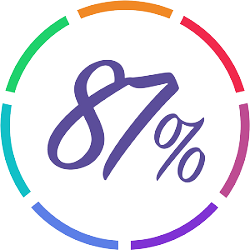Good ways to give this Christmas
The festive season is here and many of us will be Christmas shopping and present wrapping over the next couple weeks. In addition to buying presents for our nearest and dearest, a recent survey suggests that it really is the season of goodwill, with an overall increase in charitable giving expected over this particular festive period.
The happiness effect of giving
As well as spreading cheer to others, research has shown that the act of giving also boosts the mood of the giver. In one recent study, brain activity was monitored while people decided how best to spend £100. People who spent the full amount on a charitable donation recorded the most brain activity in an area that has also been linked to pleasure and reward.
As well as spreading cheer to others, research has shown that the act of giving also boosts the mood of the giver.
Interestingly, another study showed that the amount of money doesn’t influence happiness, suggesting that it was how rather than how much they spent that was the most important factor.
So why does giving trigger this happiness effect? Our brains reward us. Our unconscious brains are reflexive and believe that what we do for others, they will also do for us. So, when we give to other people, our unconscious brains release pleasure chemicals that make us feel good!
It’s important to consider your motivation for giving. If you give to get then you won’t experience the same mood-enhancing effects. When we give selflessly and lovingly, that’s when we feel the greatest benefit.
Remember, giving doesn’t have to be material in order to trigger this happiness effect. For example, volunteering and carrying out random acts of kindness have also been associated with increased levels of happiness and life satisfaction.
When giving gets too much
While giving can make us feel good, if we feel under pressure to give or do it too much then it can become a burden.
When we give selflessly and lovingly, that’s when we feel the greatest benefit.
As a general rule, matching the way we give to our own needs as well as the needs of others, can help us to find the right balance between getting the wellbeing benefits of giving without burning out.
Ask yourself:
Are there ways of giving that I find more enjoyable than others?
Does how I give fit with my goals and values?
Does how I give feel worthwhile for myself and the person I’m giving to?
If you answer “no” to any of these questions, then consider whether changing or reducing the ways in which you give would help you to feel differently. Happy givers create more benefit for others and are more likely to keep giving in the future.
Build your self-awareness around giving with #3forme
Through our #3forme campaign, we want to encourage everyone to spend a few minutes each day increasing their self-awareness and developing positive habits that maintain and improve mental health.
Through this exercise not only can you learn about yourself, the ways you currently give and get more of the feelgood factor that giving brings, but you’ll be spreading happiness to others too – it’s a win-win!
Through our #3forme campaign, we want to encourage everyone to spend a few minutes each day increasing their self-awareness and developing positive habits that maintain and improve mental health.
Spend a few minutes thinking about how you already give to others.
Do you give material things like birthday gifts and Christmas presents?
Do you donate money, food or unwanted items to charity?
How do you give with your time and energy?
Do you do things to help your family and friends?
Perhaps you help with practical tasks like shopping or walking the dog or lending a hand with a DIY project?
Perhaps you check in regularly with the people you care about or lend an ear when they need to talk?
Do you support your colleagues at work?
Are you willing to help out and do your bit for the greater good of the team?
Do you help other people to achieve their goals?
Do you get the coffees in and make a point of asking how your colleagues are doing?
Do you give to people in your wider community?
Perhaps you volunteer in some capacity?
Do you show kindness and respect to strangers, by holding doors open, letting people out in front of you in traffic, or smiling and saying hello to others when you’re out and about?
Try this challenge: 7 days of giving
For the next 7 days, make a commitment to give to someone each day, without expecting anything in return, and notice how it makes you feel. Remember, you can give with your time, money, energy or ideas and you don’t have to give in big ways. Small acts of giving make a real difference too.
In my video this week I explain how we can also give in our everyday interactions by treating people with kindness and respect. You can watch the video here.


